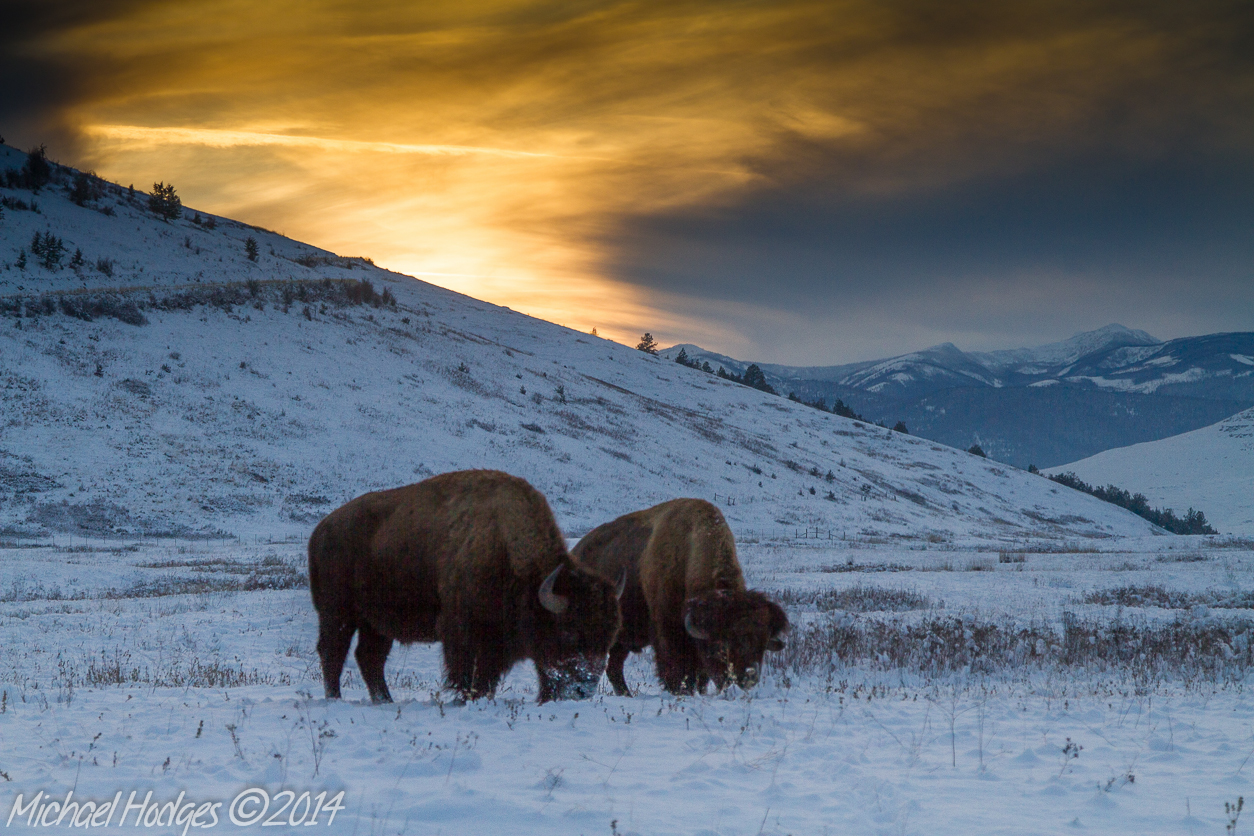MichaelHodges said:scyrene said:Hey, can you post some high DR wildlife images, please? I'd like to be able to visualise what you're talking aboutLike I said way back in this thread, I assume it's partly cos you're going for big mammals rather than tiny songbirds, but I may be wrong.
I'd be happy to. This image just got picked up for a textbook run:

One of the first things I look for, above all else in wildlife photography is "animal-scapes". I find them far more interesting than nostril or "trophy" shots. This often involves using shorter telephoto lenses. And it often involves shooting in less than ideal light, and in conditions like this (eight below zero). The bison were happy as could be, though.
This was one of the rare instances when my 7D did okay. The shot is ISO 200, and obviously I'm trying to get the sunset exposure nailed perfectly while bringing up the bison shadows later in post. You can't fix a blown sky, but you can lift shadows. Well, sort of.When lifting the shadows, the 7D annihilated detail with severe banding and noise. I was able to fix much of it with tedious post processing, but a superior sensor would have delivered a cleaner image capable of printing much larger. I had my 6D with me, but it was attached to a 300mm.
Don't get me wrong, I'm happy, but it could have been cleaner.
Come on Michael, stop pulling everyone's leg. You shot that on a D800 didn't you
Upvote
0
